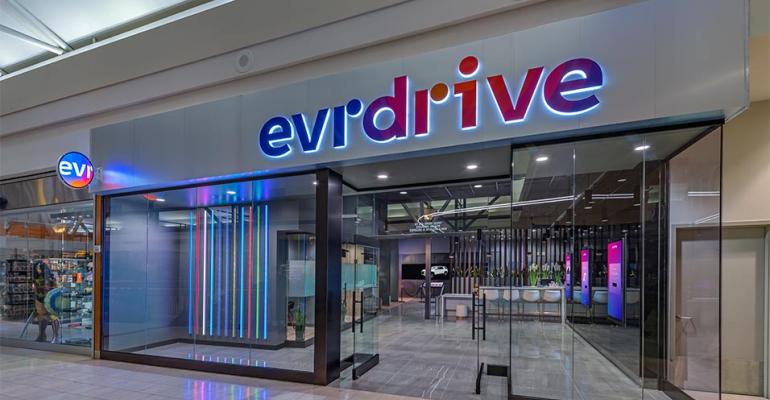Dealers are seeking new ways to meet consumers where they want to be met. Alternative retail formats (ARFs) are one way. A recent report by Urban Science finds that most dealers use or are considering using ARFs.
Reaching consumers through different channels is necessary, but the cost may be a deterrent, says Simon Bradley, global practice director–the network at Urban Science.
“The customers’ notion of convenience is ever demanding and increasing,” he tells Wards. “(Consumers) are going to want more and more convenience, and the best convenience to a consumer is service wherever they want it.”
Other ARF possibilities are experience centers offering brand immersion and short-term pop-up dealerships and boutique stores.
Such formats can’t be seen as a place that is selling cars, or they risk violating franchise laws, says Bradley.
Still, dealers see Tesla galleries in retail malls and the number of potential customers walking past.
“Dealers are looking at every single way possible they can advertise and promote within the bounds of franchise law,” Bradley says.
Cost is a drawback to using formats such as malls. Most malls want a multi-term commitment, Bradley notes, and that is expensive for a location where a dealer can, in most cases, only use to generate leads or schedule test drives.
“The cost of doing business in a retail location is extremely expensive,” he says.
That cost may be why, among traditional automakers, luxury brands have been the most active in considering alternative retail formats.
Bradley mentions a Georgia Mercedes-Benz dealership testing a “lifestyle boutique” and can attribute some percentage of sales to the location. Still, measuring the effectiveness of alternative retail formats is problematic.
Urban Science suggests that, aside from sales attribution, local market penetration is a way to measure success. That relies on choosing the correct location.
“Put (the alternative retail format) in places where you have a localized shortfall of penetration,” says Bradley. “Its impact is going to be fairly limited geographically (so you can) see very locally if it changed the sales performance of that store.”
Urban Science has seen temporary ARFs of three to six months have a lasting effect in market penetration if the dealership continues to support the format, he says.
“What I observed is that for about a year after (the ARF’s existence) … the market continued to perform above average, and the only thing we could attribute it to was the pop-up,” Bradley says.
Some dealership groups are experimenting with using virtual reality in alternative retail formats.
Last December, Canadian dealership group Foundation Automotive opened a virtual reality showroom for its evrdrive subsidiary, which sells only used vehicles, in The Woodlands, an upscale residential area near Houston.
Consumers can tour vehicles using VR goggles, schedule virtual test drives and even complete the purchase online.
That might work for a subset of customers, Bradley says.
“For certain consumers who have already made up their minds, the VR experience may tip them over the edge (but) customers want to test drive cars physically,” he says.
Overall, Bradley is skeptical of the value proposition for ARFs. Many, such as the Lincoln Experience Center in Frisco, TX, have failed to produce the desired return, he says. It closed after four and a half years.
“It is never going to be a winning proposition,” Bradley says. “You are going to lose because of the cost.”





